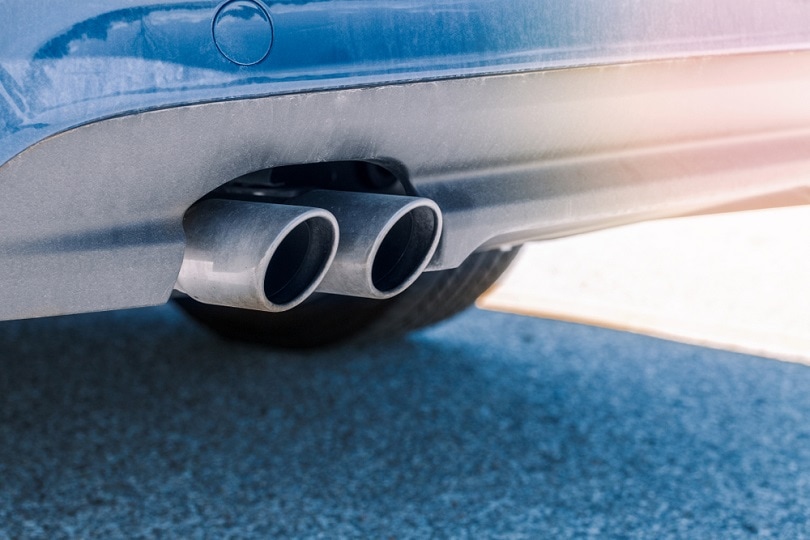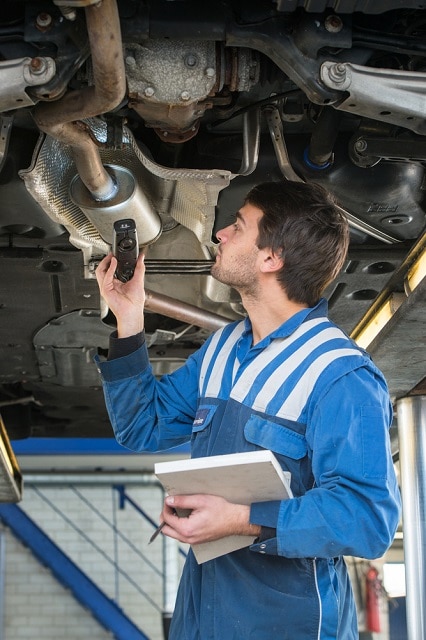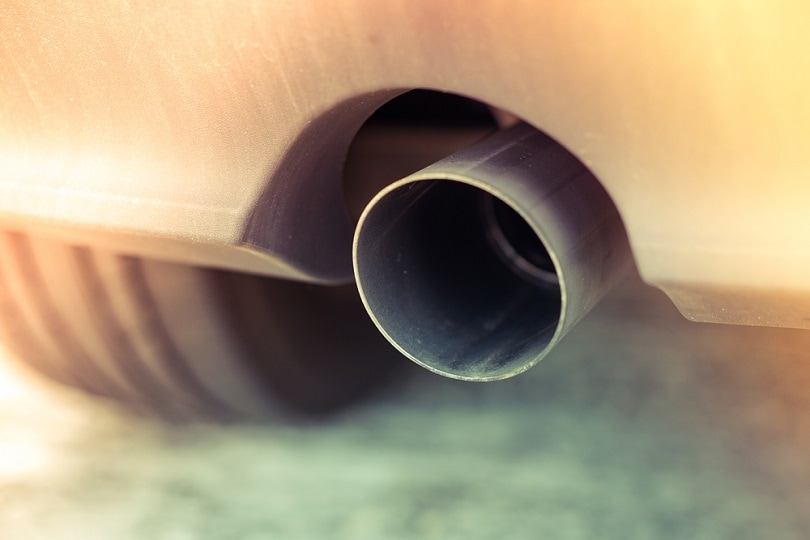How to Fix an Exhaust Leak without Welding – Quick & Easy Guide
Last Updated on

You know you have an exhaust leak, but you’re not sure where it is or how to fix it. You don’t want to take the car into the shop if you can fix it yourself, right? But you also are not skilled or confident enough with a welder to fix it. But there are other methods to fix the leak that don’t require welding.
In addition to the engine not running as well as it should, your check engine light can come on, and you will not have as good of fuel economy. Getting it repaired is important to the well-being of your vehicle. Here’s a step-by-step solution to get the leak fixed and get your ride back in tip-top shape.
Gather Equipment
Before you get started. you need to gather some tools. You’re going to be searching, finding, and repairing an exhaust leak. Be sure to be safe while you’re doing it.
- Nitrile work gloves
- Car jack or wheel ramps with wheel chocks
- Shop-vac or leaf blower (if desired)
- Wire brush
- Sandpaper
- Isopropyl alcohol
- Shop rags
- Exhaust putty
- Exhaust bandage
- Exhaust clamp
- Screwdriver or ratchet set (depending on clamp fasteners)
This is a list to get you started. You will likely only need to repair the leak using only one method. You will not need to purchase all of the above. See below before doing your shopping.

Finding the Leak
You know that you have a leak. You can hear the extra noise when you’re driving. Perhaps you aren’t getting the miles per gallon that you used to. This can be disappointing, especially if you bought the car for this reason! Another sign you might have a leak is that you can smell exhaust while you are driving. There are a couple of things you can do to find the leak. But before you start searching, elevate the vehicle on a car jack or on wheel ramps if you have them.
One method is to run the vehicle and cover the tailpipe, preferably with an old rag. Keep it in place while you search the exhaust system on the underside of the vehicle and work your way toward the manifold under the hood. Since the tailpipe at the muffler is plugged, the sound of any leaks is going to be made more apparent. Note that on the muffler, often on the backside, there is a drainage hole where any condensation can escape. Do not plug this! Look for areas where there is excess soot as well. If there is a leak, often there will be soot in the same place.
Another way to find the leak is to put a shop-vac on the tailpipe, thereby pushing air into the system. Follow the exhaust system on the underside of the vehicle and spray the exhaust lines with a bottle of soapy water. This will highlight any areas where the air is escaping. Focus especially on flanges and connecting parts. With this method, there is no need to turn on the car.
Repairing the Leak
There are a few different ways that you can repair an exhaust leak. You will be able to choose from one of these three depending on the type and size of your leak.
Exhaust Putty
This is ideal for small leaks. First, take your wire brush or sandpaper to clean the surface. Aside from cleaning off the debris, this will roughen up the surface allowing your putty to bond better. Finally, use a rag and isopropyl alcohol to clean up anything not visible to the naked eye. Remove the cap from your putty, stir it to a viscous cement-like consistency. You can use a smaller wooden paint stick to stir and apply. Be somewhat generous and cover more surface area than simply where you think the leak is. Finally, let it dry. Be sure that it is dry before you run the vehicle! You can use a heat gun to make the process quicker.
Exhaust Clamp
Whereas putty is probably going to be the best option for a small leak, if you have a gaping hole somewhere in the exhaust system, you need something bigger. If your leak is not on a joint or a flange, an exhaust clamp will work just fine. Clean the area enough to ensure that the clamp can tighten unimpeded. Then remove the bolts from the clamp. Expand the clamp around the area of your exhaust leak and refasten the hardware nice and snug.
Exhaust Bandage Wrap
You might have a gaping hole right next to a flange or other joint. In this case, an exhaust clamp is not going to be well-suited for your purposes. This is where an exhaust bandage can be helpful. This adhesive needs to be applied when the exhaust pipe is hot. Warm up the vehicle beforehand and make sure that the pipe is hot to the touch. Remove the ‘bandage strips’, which will reveal the extremely adhesive surface. Wrap the bandage around the damaged area, and like applying the putty, don’t be afraid to be generous with the wrap. Go an inch or two beyond the leak Finally, run the vehicle again so that it bonds properly. It will bond as strong as steel and without welding!

Inspecting the Repair
After you have installed the clamp, your putty has dried, or the exhaust bandage has bonded, you need to inspect your work to make sure it’s done properly. This time around you will almost certainly want to use the spray bottle of soapy water. Fire up the vehicle or use the shop-vac as before, and spray the area repaired. Are you still hearing some noise? You may have another leak that you missed the first time around. The good news is that you know how to fix it now! The second job should be done in half the time.
Conclusion
That’s how easy it is to fix an exhaust leak without welding. While welding can be an attractive option for a structurally sound fix, you have to deal with a lot more safety issues from personal safety and health to dealing with fire being near the exhaust. These three options should get your leak fixed and your car back on the road again with some peace and quiet.
Check out some of our other top trending posts:
- Electrode Welding: What is it, & How To Choose? (with Chart)
- How to Make Welding Clamps at Home
- What is Stick Welding? – Understanding it Thoroughly
Featured image credit: Anna Kraynova, Shutterstock
